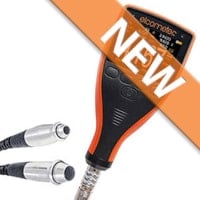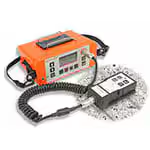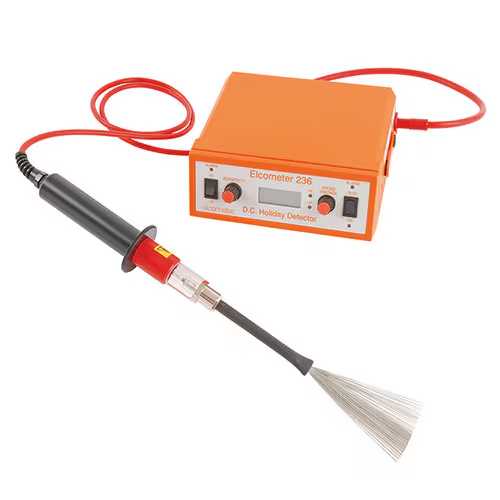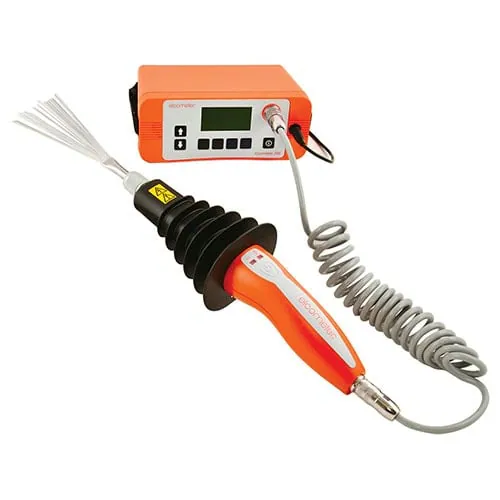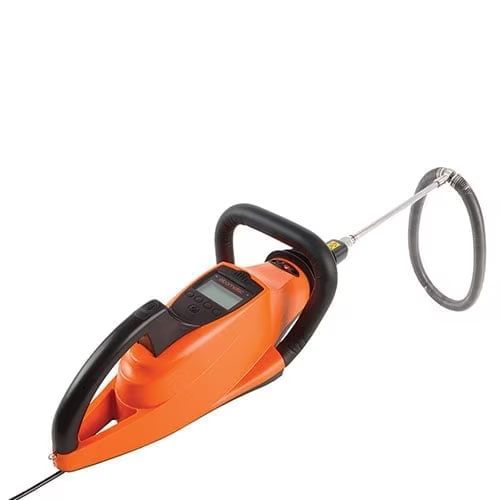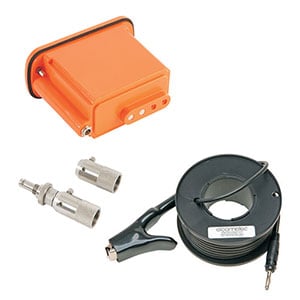|
|
|
Holiday Detectors
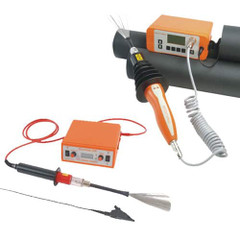 |
View Our Holiday Detectors
Holiday testing is a non-destructive test method applied on protective coatings to detect unacceptable discontinuities such as pinholes and voids. The test involves checking an electric circuit to see if current flows to complete the circuit. This testing is used to find coating film discontinuities that are not readily visible.
The testing is usually performed on tank interiors, chemical storage vessels and buried structures because of the importance of maintaining adequate coating protection in aggressive service environments.
Holiday testing is also known as continuity testing.
There are, essentially, three flaw detection methods:
UV Pinhole Detection
UV light can be used as a low cost, quick method of detecting pinholes in coatings. A base coat containing a UV fluorescing additive is applied. When the UV flashlight shines on the coating, areas where the base coat is not covered fluoresce, identifying the location of the pinhole.
Wet Sponge Technique
A low voltage is applied to a moist sponge. When the sponge moves over a coating flaw, liquid penetrates to the substrate and completes an electrical circuit, setting off the alarm. The wet sponge technique is suitable for measuring insulating coatings less than 500μm (20mils) on conductive substrates, and is ideal for powder coatings and other coatings where the user does not wish to damage the coating.
High Voltage Technique
The high voltage, or porosity technique, can be used to test coatings up to 25mm (1") thick and is ideal for inspecting pipelines and other protective coatings. Coatings on concrete can also be tested using this method. A power supply generates a high voltage DC or pulsed DC to a probe. As the probe passes over a flaw, a spark at the contact point sets off the alarm.
This technique is suitable for locating the types of flaws described above, although care is required on thin coatings.
The high-voltage, or porosity technique, can be used to test coatings up to 1" (25mm) thick and is ideal for inspecting pipelines and other protective coatings. Coatings on concrete can also be tested using this method.
A power supply generates a high voltage DE or pulsed DC to a probe. As the probe passes over a flaw, a spark at the contact point sets off the alarm.
Click for more information on finding the right holiday detector for your application.
|
The Elcometer 236 Holiday Detector provides high voltage porosity testing to detect pits, flaws, holes, etc. in a wide variety of non-metallic coatings.
The Elcometer 236's convenient carry case allows the probe handle and accessories to be attached to the front making the Elcometer 236 holiday tester ideal for field, site or laboratory inspection.
|
The Elcometer 266 revolutionizes high voltage DC testing of coatings porosity detection making it safer, easier and more reliable than ever before. The Elcometer 266 holiday detector can be used to test porosity on coatings up to 7 mm (275 mils) thick and is ideal for inspecting coatings on pipelines and other protective coatings.This holiday tester features a built-in voltage calculator which will determine and set the correct test voltage based upon the test standard and the thickness of coating being tested.
|
The Elcometer 280 is a 'stick type' holiday detector which has been designed to make pulsed DC high voltage holiday detection safer, easier and more reliable than ever before.
Using state of the art electronics, the Elcometer 280 allows users to inspect coatings - without connecting the earth return lead to the component substrate - ideal for inspecting large surfaces and pipelines. Using the wide range of probe accessories users can detect porosity / holidays in coatings up to 25mm (1") thick.
The Elcometer 280 uses the high voltage pulsed DC technique to detect holidays in coatings - even if the coating is damp, dirty or slightly conductive.
|
Accessories for the Elcometer 236, 266 & 280 range of holiday detectors.
|
|
|
|
|
|



